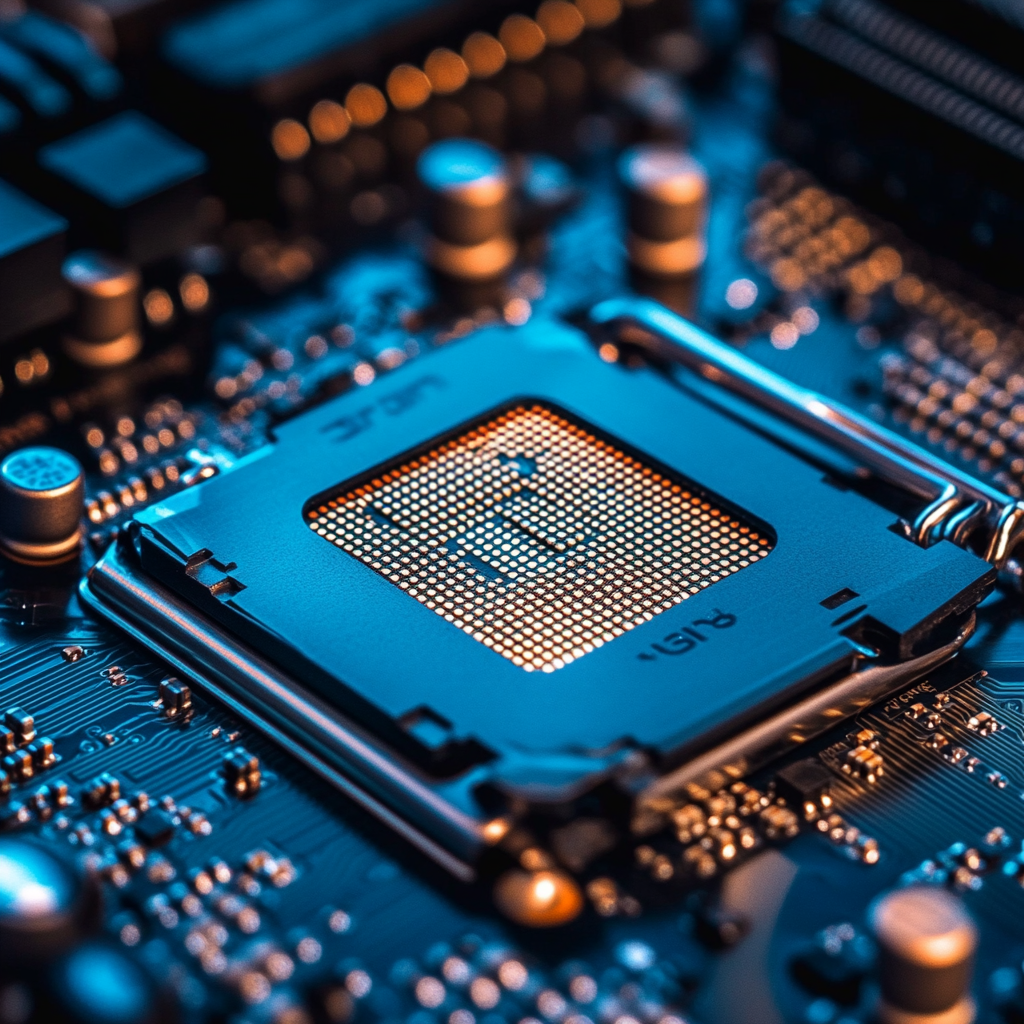Intel Stock Target Cut Amid CEO Change Concerns – FangWallet

This article may contain references to products or services from one or more of our advertisers or partners. We may receive compensation when you click on links to those products or services. Nonetheless, our opinions are our own.
Understanding the Analyst’s Revised Stock Price Target for Intel
Analysts’ recent adjustments to Intel’s stock price target reflect a nuanced understanding of the company’s evolving landscape, particularly following the appointment of a new CEO. Several factors may influence Intel’s market performance and investor sentiment as the leadership transitions. Consider the following aspects:
New leadership vision
A fresh perspective at the helm can reshape strategies and priorities, but it often comes with uncertainties.
Market position
Despite challenges, Intel’s longstanding reputation in the semiconductor industry still offers potential for growth if managed effectively.
Technological investments
Analysts closely watch how the company directs its resources toward innovation, which could play a pivotal role in future projections.
To illustrate, here’s a simplified version of the analyst’s revised target predictions during this pivotal time:
| Date | Previous Target | Revised Target |
|---|---|---|
| August 2023 | $50 | $45 |
| September 2023 | $50 | $40 |
According to publicly available analyst reports from firms such as Morgan Stanley and Barclays, Intel’s price target has been revised due to execution concerns during the CEO transition.
These revisions signal caution in light of leadership changes, highlighting the necessity to stay informed on how these dynamics could impact both short-term volatility and long-term growth potential. Engaging with ongoing reports and market analysis will allow you to navigate your investment strategy more effectively.
What the New CEO Means for Intel’s Future Performance
With the appointment of a new CEO, you might wonder how this shift will impact Intel’s trajectory. The leadership change brings both opportunities and challenges. On one hand, a fresh vision could reinvigorate the company’s strategies, potentially leading to innovation and improved product lines that enhance market competitiveness. However, there’s also the risk of instability as the new leader adjusts to their role and navigates the existing corporate culture. This dynamic could affect short-term performance, so staying informed is vital.
As you assess Intel’s prospects, consider the following factors:
Strategic direction
Will the new CEO prioritize growth in emerging technologies like AI and data centers?
Market adaptability
How quickly can the company pivot to address competition from rivals like AMD and Nvidia?
Financial health
Is there a plan for managing debt while investing in innovation and infrastructure?
These elements could affect your investment decisions. Monitor the stock price’s reaction in the upcoming months as the market adjusts to changes in leadership and any strategic announcements made by the new CEO. You might also want to consider diversifying your portfolio if Intel’s performance diminishes, ensuring you mitigate risk while exploring other lucrative options.
Assessing the Risks and Rewards of Investing in Intel Now
As you consider diving into Intel’s stock, weighing both the potential gains and the risks involved is crucial. With the new CEO at the helm, several factors should be on your radar:
Strategic direction
The leadership change brings uncertainty about future strategies and initiatives. You’ll want to evaluate how the new CEO plans to navigate the competitive tech landscape.
Market position
Intel has historically been a leader in semiconductor technology, but emerging competitors are shaking things up. Monitoring market trends is crucial to comprehend Intel’s future position.
Financial performance
Analyzing recent earnings reports and future projections can give insight into how well Intel manages its resources and adapts to market demands.
On the reward side, there are benefits for those willing to invest now:
Valuation opportunities
If Intel’s stock price is perceived as undervalued amid uncertainty, you could be looking at a bargain investment.
Potential for innovation
Intel’s research and advancement investments may yield new technologies that considerably boost its market share and profitability.
Long-term growth
Many analysts believe Intel can bounce back; if the new leadership successfully implements innovative strategies, the stock could see considerable growth over time.
Understanding the risks and potential rewards is key to making an informed decision. Balancing your investment portfolio while staying updated on Intel’s developments will empower you on your financial journey.
As you grapple with the recent shifts in Intel’s stock outlook, adopting practical strategies that empower your investment decisions amid uncertainty is essential. Here are some actionable tips to consider:
Diversify your portfolio
Don’t overinvest. By diversifying your investments across various sectors and asset classes, you can reduce risk and improve your chances of weathering market fluctuations.
Stay informed
Continuously monitor Intel’s developments, especially under the new leadership. Subscribe to financial news services or follow reputable analysts to keep abreast of potential company performance impacts.
Set clear investment goals
Determine what you want to achieve with your investment in Intel—short-term gains or long-term growth—and stick to your plan. Establishing milestones can help you stay focused.
Embrace flexibility
Be prepared to adjust your strategy based on new information. If the market sentiment shifts dramatically due to the CEO’s policies, you might need to reevaluate your position.
| Strategy | Benefits |
|---|---|
| Diversification | Reduces overall risk |
| Continuous Learning | Informs timely decisions |
| Goal Setting | Provides direction and clarity |
| Flexibility | Adapts to market changes |
Making Informed Decisions: Investing in Intel Amid Leadership Changes
As Intel navigates leadership changes, it’s crucial to approach any investment decisions with a clear perspective. Your judgment should be tempered with an understanding of the company’s strategic direction under the new CEO. While shifts at the top can introduce uncertainty, they can also present unique opportunities for savvy investors. Here are some key considerations to keep in mind:
Company fundamentals
Take a closer look at Intel’s core financials. Are they showing consistent revenue growth? Analyzing the company’s earnings reports can provide a clearer picture of its stability.
Market position
Assess how new leadership may affect Intel’s position in the semiconductor industry. Will the new CEO’s vision align with market demands and technological advancements?
Competitor analysis
Monitor your competitors’ performance. Are they innovating faster? Understanding where Intel stands relative to its rivals can help gauge future performance.
To support your analysis, here’s a simple table comparing key metrics of Intel and its main competitors:
| Company | Market Cap (Billion $) | Current P/E Ratio | Last Quarter Growth (%) |
|---|---|---|---|
| Intel | 150 | 12 | 3 |
| AMD | 130 | 20 | 5 |
| NVIDIA | 350 | 30 | 10 |
Recognizing the potential volatility during this transition phase can help you make informed choices. Be prepared to adjust your strategy based on ongoing analyses, and don’t hesitate to seek insight from multiple sources before moving forward. Your informed approach will not only mitigate risks but could also uncover potential growth in what many perceive as a turbulent time for Intel.
Empowering Your Portfolio: Diversifying Beyond Intel’s Stock
It’s essential to remember that relying heavily on a single stock, such as Intel, can expose your portfolio to unnecessary risks. While leadership changes can be a natural part of any company’s evolution, they often bring uncertainty that could affect stock performance. This is a prime opportunity to reassess your investment strategy and consider diversifying into other sectors. By doing so, you can mitigate losses linked to Intel while capturing growth from a broader range of assets.
Here are some sectors to consider for diversification:
Healthcare
With an aging population and ongoing medical advancements, companies in pharmaceuticals or biotechnology may present promising investment opportunities.
Renewable energy
Investing in green technology can offer strong long-term potential as the world shifts toward sustainable solutions.
Financial services
Consider ETFs or stocks in well-established banks or fintech companies adapting to changing markets.
Consumer goods
These companies often provide steady revenue streams, making them relatively resilient during economic downturns.
To help visualize your potential allocation, consider the following table:
| Sector | Allocation (%) | Rationale |
|---|---|---|
| Healthcare | 25% | Stable demand irrespective of economic conditions |
| Renewable Energy | 20% | Growth potential as global policies favor sustainability |
| Financial Services | 20% | Adaptable to market shifts with diverse offerings |
| Consumer Goods | 15% | Essential products that drive consistent sales |
| Technology (excluding Intel) | 20% | Broad exposure to emerging tech fields |
By carefully selecting investments across multiple sectors, you protect your assets and position yourself to benefit from new growth opportunities that may arise in the market. Remember, diversification isn’t just a safety net—it’s a strategy for long-term financial success.
Frequently Asked Questions
What prompted the analyst to rework Intel’s stock price target?
The analyst’s reevaluation of Intel’s stock price target stems from recent shifts in company leadership and the strategic vision introduced by the new CEO. Concerns exist regarding how these changes might impact Intel’s operational efficiency and market competitiveness moving forward.
What concerns do investors have about the new CEO?
Investors are worried that the new CEO may not have the necessary experience or vision to navigate Intel’s challenges, including competition in the semiconductor industry and the need for innovation. There is also apprehension regarding potential changes in corporate strategy that could affect profitability.
How has the stock market reacted to the news?
The stock market has shown mixed reactions to the revised price target and leadership changes. Some investors have expressed skepticism, leading to a dip in stock prices, while others remain hopeful that the new CEO could revitalize the company.
What factors could influence Intel’s future performance?
Intel’s future performance could be influenced by several factors, including technological advancements, the company’s ability to innovate, competitive pressures from rivals, and the effectiveness of the new CEO’s leadership. Additionally, broader economic conditions and shifts in consumer demand for semiconductors could play significant roles.
What should investors consider when making decisions about Intel stock?
Investors should carefully consider Intel’s ongoing changes and evaluate how the new leadership may affect the company’s long-term strategy. They should also look at market trends, competitive dynamics, and Intel’s development pipeline to assess potential risks and rewards associated with their investment in Intel stock.
Last Updated: March 22, 2025

Reviewed and edited by Albert Fang.
See a typo or want to suggest an edit/revision to the content? Use the comment form below for feedback.
At FangWallet, we value editorial integrity and open collaboration in curating quality content for readers to enjoy. Much appreciated for the assist.
Did you like our article and find it insightful? We encourage sharing the article link with family and friends to benefit as well – better yet, sharing on social media. Thank you for the support! 🍉
Article Title: Intel Stock Target Cut Amid CEO Change Concerns
https://fangwallet.com/2025/03/26/intel-stock-target-cut-amid-ceo-change-concerns/The FangWallet Promise
FangWallet is an editorially independent resource – founded on breaking down challenging financial concepts for anyone to understand since 2014. While we adhere to editorial integrity, note that this post may contain references to products from our partners.
The FangWallet promise is always to have your best interest in mind and be transparent and honest about the financial picture.
Become an Insider
Editorial Disclaimer: The editorial content on this page is not provided by any of the companies mentioned. The opinions expressed here are the author’s alone.
The content of this website is for informational purposes only and does not represent investment advice, or an offer or solicitation to buy or sell any security, investment, or product. Investors are encouraged to do their own due diligence, and, if necessary, consult professional advising before making any investment decisions. Investing involves a high degree of risk, and financial losses may occur including the potential loss of principal.
Advertiser Disclosure: This article may contain references to products or services from one or more of our advertisers or partners. We may receive compensation when you click on links to those products or services.
Source Citation References:
+ Inspo
Investopedia. (n.d.). Investopedia. https://www.investopedia.com/
Wikipedia, the free encyclopedia. (n.d.). https://www.wikipedia.org/
Fang, A. (n.d.). FangWallet — Personal Finance Blog on Passive Income Ideas. FangWallet. https://fangwallet.com/
Google Scholar. (n.d.). Google Scholar. https://scholar.google.com/
There are no additional citations or references to note for this article at this time.
Source: Intel Stock Target Cut Amid CEO Change Concerns – FangWallet




